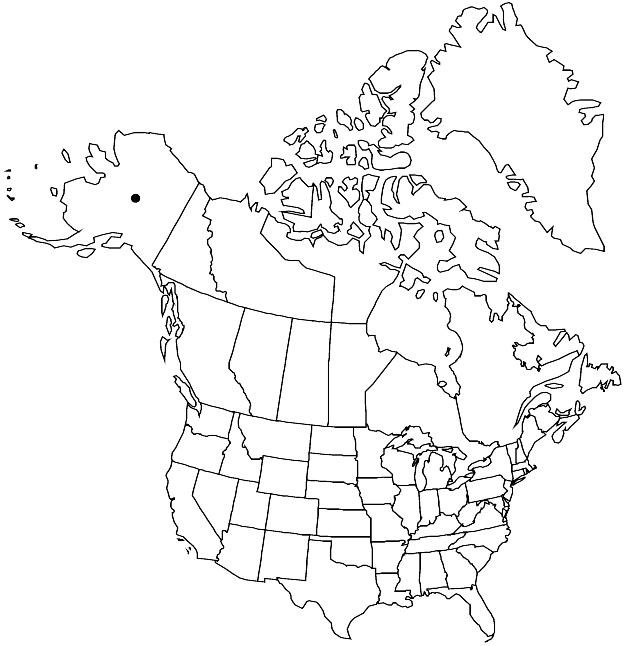Orthotrichum fenestratum
Proc. Wash. Acad. Sci. 4: 310, plate 16, fig. 2. 1902.
Plants to 1.2 cm. Stem leaves erect-appressed when dry, ovate-lanceolate to narrowly lanceolate, 2.2–3.2 mm; margins narrowly revolute to below apex, entire; apex acute and often cuspidate-apiculate; basal laminal cells elongate, walls thick, nodose; distal cells 9–15 µm, 1-stratose, papillae 1 or 2 per cell, conic, small. Specialized asexual reproduction absent. Sexual condition gonioautoicous. Seta 2 mm. Capsule exserted, ovate-oblong when dry, ovate when moist, 1–1.8 mm, smooth to moderately 8-ribbed; stomata superficial; peristome single, rarely double; prostome absent; exostome teeth 8, splitting to 16, erect to recurved when old, finely papillose to almost smooth basally, coarsely papillose distally, fenestrate, cancellate; endostome segments 8, well developed, usually present when capsule is old and dry, narrow, of 1 row of cells, papillose-reticulate. Calyptra short-conic, smooth, hairs few, smooth. Spores 20–27 µm.
Habitat: Habitat unknown
Elevation: elevations (0 m)
Discussion
Orthotrichum fenestratum was collected only once by J. M. Macoun, who did not record the substrate, but it was probably near sea level. The plants are distinguished by their exostome teeth that are cancellate to the base, fenestrate and perforate only distally, and the ovate capsule.
Selected References
None.
